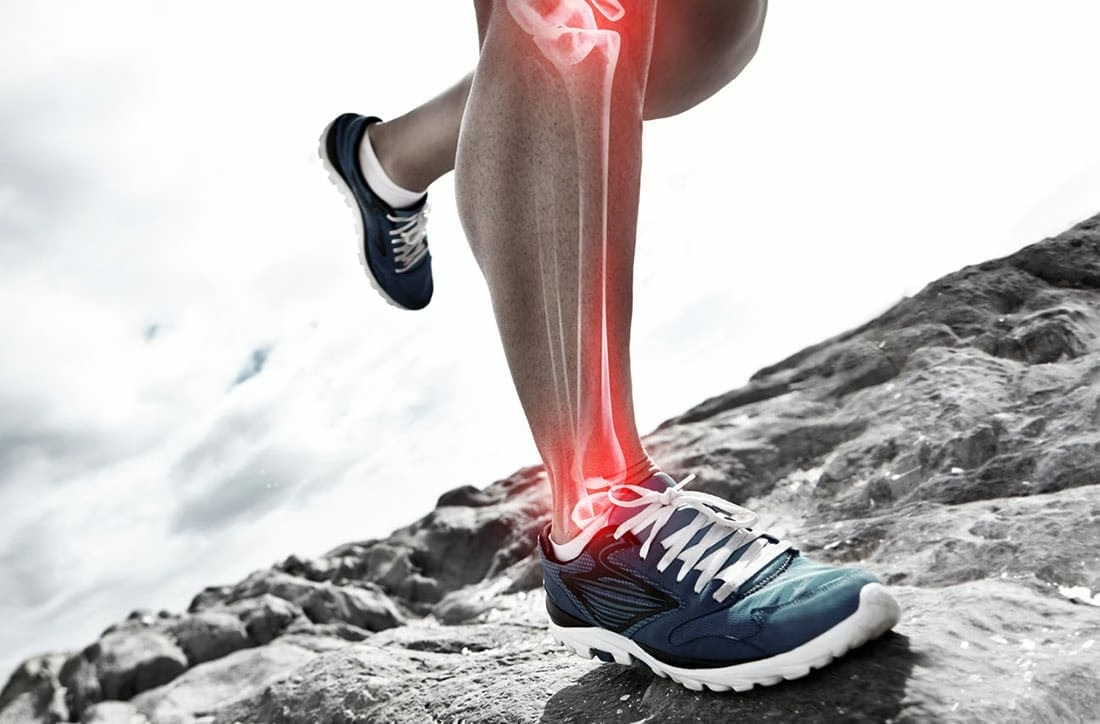Face it. Bitumen is boring. Concrete? Crap. Tarmac is tedious. Running on asphalt is about as much fun as sniffing your own… ask anyone who’s taken the plunge off-road and they’ll agree.
Of course, trail running isn’t new — most of us knew it in school as cross-country.
And that’s where many left it, in a dusty locker with their stinky old gym bag.
But it’s making a comeback. As more runners start seeking adventure, trail running is gaining ground. The views are better, the air is cleaner, and your chances of being car-doored by a hoon are pretty much zero.
In the US and Europe, trail running is already booming. Events are selling out, participation is surging, and recreational runners are dusting off old trekking guides to find new wilderness routes to explore.
Now it’s Australia’s turn. Ultras like The North Face 100, Six Foot Track Marathon, Great Ocean Walk 100, and Cradle Mountain Run are sell-outs, attracting elite international athletes like Spanish phenom Kilian Jornet. These events have even scored mainstream media coverage.
Beau Miles, who in 2011 became the first to run the entire 660km Australian Alpine Walking Track, was featured on Sports Tonight — a sign trail running’s profile has never been higher.
Andrew Vize, co-founder of Ultra168.com and a top-tier ultra-runner, has seen the shift firsthand. In 2011, he ran five ultra trail events between 45km and 240km, setting race records in three and placing third in the 240km Coast to Kosciuszko.
“There’s no doubt trail running in Australia and globally is growing exponentially,” Vize says. “Races sell out in hours. Lotteries for 100-mile races now have 8000-plus people chasing fewer than 350 spots.”
Vize, the fastest Australian to complete the Western States 100, notes the competitive field has stepped up: “Gone are the days of just completing an event. Now it’s about racing hard, even for 30 hours straight.”
So what’s pulling both competitive A-types and casual runners off-road? “It’s the chance to explore,” says Vize. “You can cover more distance than bushwalking. You touch trees, smell dirt, cross rivers — it’s like a giant playground.”
And it’s a break from cushy office life. Ultra marathons challenge both the body and mind.
Trail running may be more competitive now, but it hasn’t lost its spirit. In 2010, The North Face 100 saw Stuart Gibson and Andy Lee agree 2km from the finish to cross the line hand-in-hand — a moment they were forever ribbed for.
The global success of Chris McDougall’s Born To Run helped spark interest. So have sponsored athletes like Jornet and South African Ryan Sandes, whose achievements are legendary (Jornet summited and descended Kilimanjaro — 5895m — in just over 7 hours). Their visibility in films, ads, and social media has brought trail running to the masses.
Still, the mainstream media often stick to the “crazy ultrarunner” angle. If a marathon is mad, what’s 100km through the mountains?
But shorter, less technical races are helping pull everyday runners onto the trails. The Salomon Trail Running Series, for example, launched in Melbourne along the Yarra River and is designed to be beginner-friendly.
“Our events are achievable and close to cities,” says series director John Jacoby. “We want to ease people into it — once they’re hooked, they’ll crave more.”
Brett Saxon of Trails Plus agrees. His events include shorter distances like 15km and 30km to help newbies build confidence before tackling 50km or 80km courses.
“You don’t just go out and do a 50km trail run,” Saxon says. “But people will work up to it.”
Trail Running 101: Why Get Dirty?
The best trails are often narrow “single track” routes — think bushwalking trails winding through pristine wilderness. Trail running might also include fire roads and even the occasional road section, but the heart of the sport lies in nature.
Elite trail runners like Vize train hard, covering ultra distances over harsh terrain and high altitudes. But most of us can find joy on non-technical trails: smooth dirt paths with gentle inclines. These are easier on the body and more about fun than suffering.
Trail running also delivers health benefits. It’s physically demanding in a more complete way: you duck, twist, climb, descend. Your body works harder and uses more muscles than road running.
Paradoxically, it’s easier on your joints. On roads, every step is repetitive. On trails, the varied terrain spreads the load across different muscles and joints. Softer surfaces like dirt or grass also absorb impact better.
And the views? Forget grey footpaths and traffic. Trails take you to stunning, serene places.
Train for the Trail
Trail running demands agility, strength, and endurance. Your cadence and rhythm will change constantly — embrace it.
Build distance: Start slow. For races under 10km, build up to 60-minute long runs. For longer distances, push to 90 minutes or more. Don’t increase weekly mileage by more than 10%.
Strength training: Do high-rep, low-weight workouts to build core, glutes, quads, and hamstrings. Try step-ups, squats, and knee raises.
Agility training: Use trail runs or even backyard drills like weaving through cones or jumping between tyres to boost coordination.
Speed & variability: Train both leg turnover and trail adaptability. Alternate track sessions (e.g. 6–8 x 400m sprints) with fartlek runs on varied terrain.
Top 10 Trail Races in Australia
- The North Face 100 – 100km, Blue Mountains, NSW
- GOW100 – Great Ocean Walk, VIC, 100km
- Bogong To Hotham – VIC Alps, 64km
- Pomona King of the Mountain – Short but steep, QLD
- Kokoda Challenge – 96km of endurance, QLD
- Six Foot Track Marathon – Classic 45km trail run, NSW
- Cradle Mountain Run – 82km through Tasmania’s wilderness
- Triple Top Mountain Run – 19.7km over three peaks, TAS
- Coastal Classic – 29km along the Royal National Park coast, NSW
- The Track – Nine-stage, 520km outback epic, NT
Trail running is no longer just for hardcore adventurers. With races and trails for every level, the dirt revolution is here — and growing fast.
Trail Techniques

The key to a lot of trail running is to stay light and nimble on your feet — as though you’re floating over the terrain, only touching down for a bit of spring. As you spring from side to side or up and down larger steps, resist the tendency to favour one leg over the other. A lot of runners start using one leg as the “plant” leg to land on heavily, and the other as the “drive” or “push-off” leg. Each leg should do these actions interchangeably.
Downhills
Run on the balls of your feet, not your heels. This means less pounding, more speed and greater control.
Uphills
Shorten your stride and keep your head up and chest forward. Run relaxed and try to find a rhythm that will take you up and over each hill with relative ease. Some trail runners don’t even run up a severe incline, as you actually waste more energy trying to bound up vertically and don’t necessarily go any faster than if you didn’t bounce and just power-walked up.
Corners
To a greater extent than on the roads, trails offer the chance to round a corner and “hide”. Practise bursts of speed when turning corners. Competitors won’t see you accelerate and will experience a mental letdown when they see you’ve “gapped” them. Include this manoeuvre as a regular part of your fartlek workout.
Streams
It’s possible to cross a stream while barely wetting your feet. All you have to do is high-step across as quickly as possible, allowing your feet to touch down only for a fraction of a second. Try it. And don’t be afraid to run right through a stream. Too many competitors lose valuable time by stopping at the edge of a stream mid-race.




